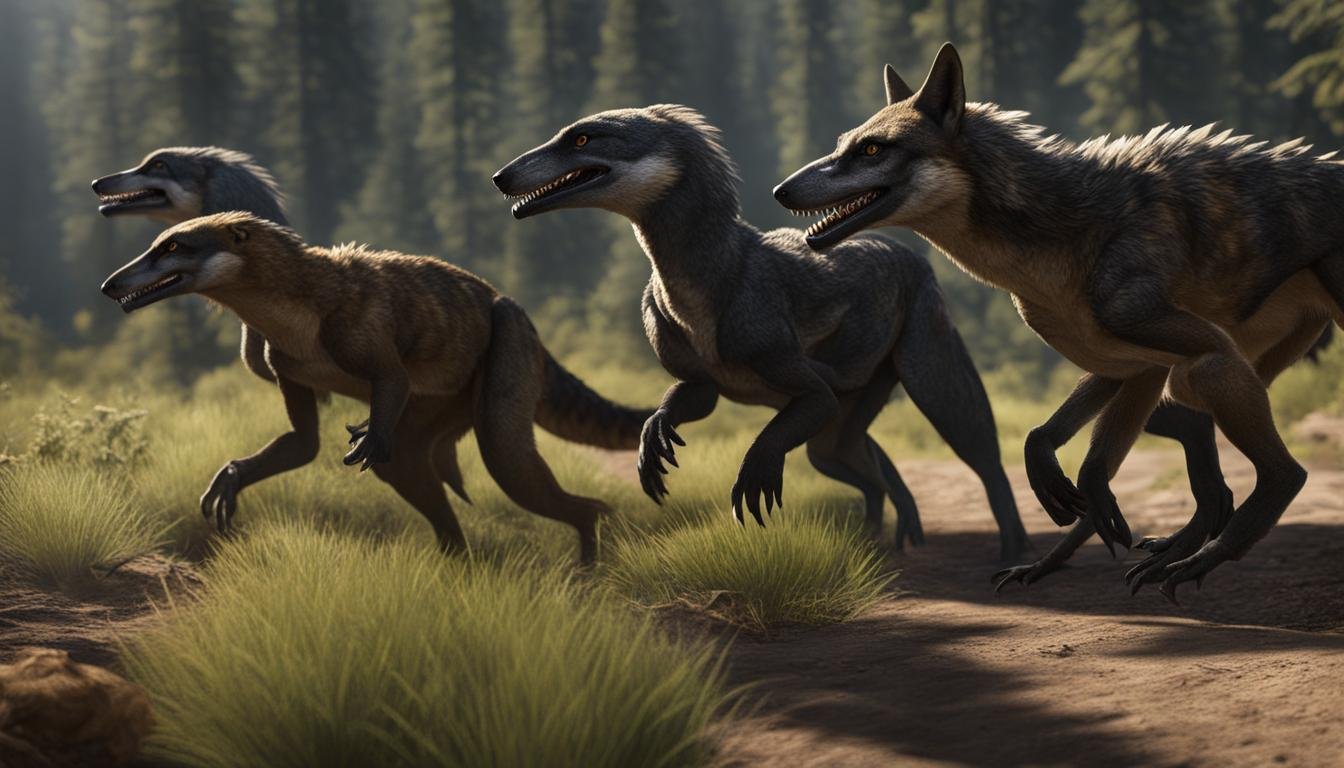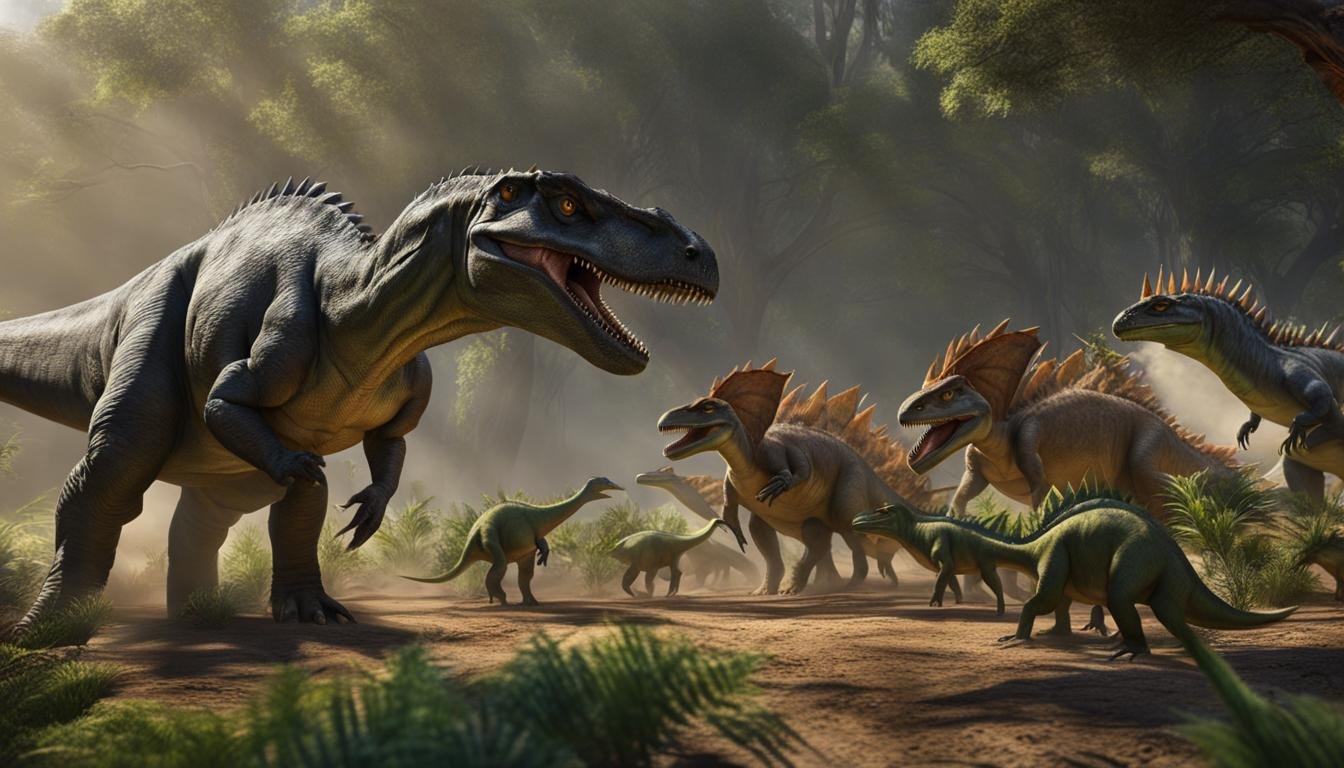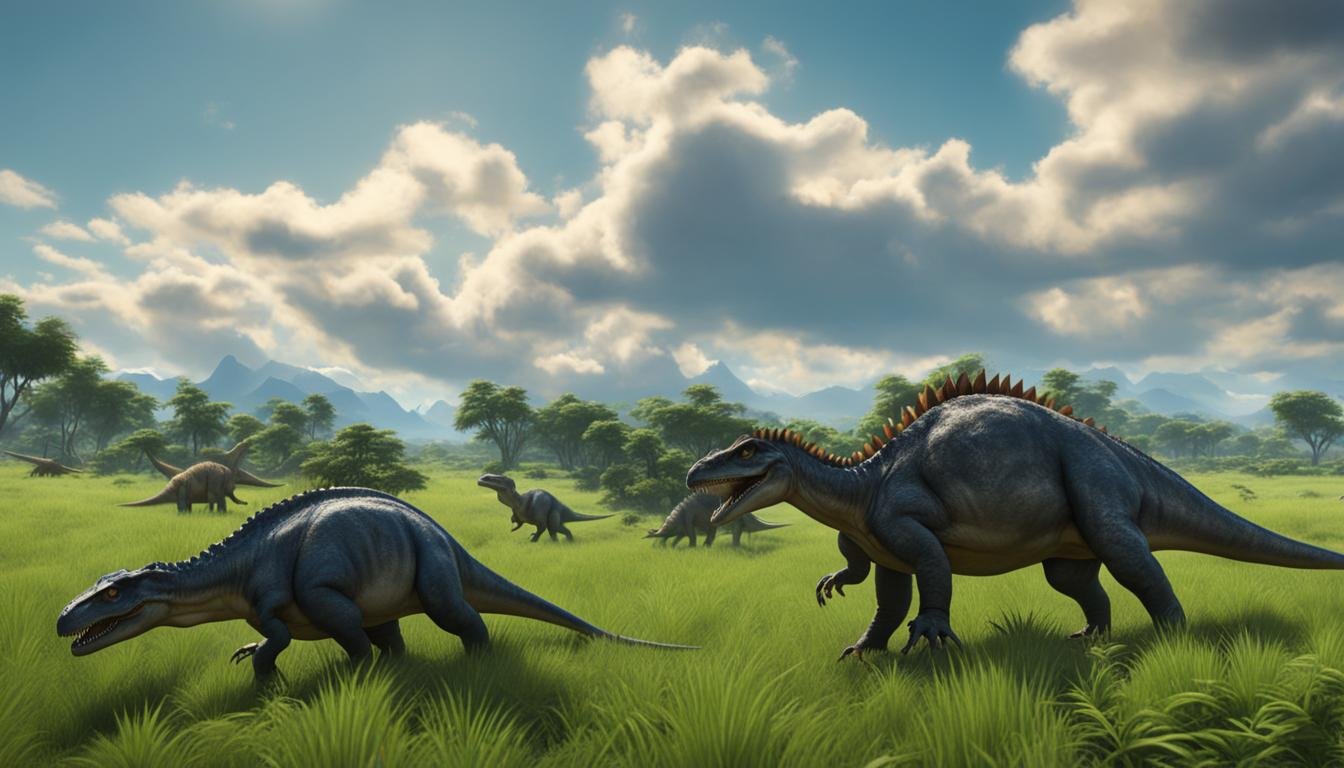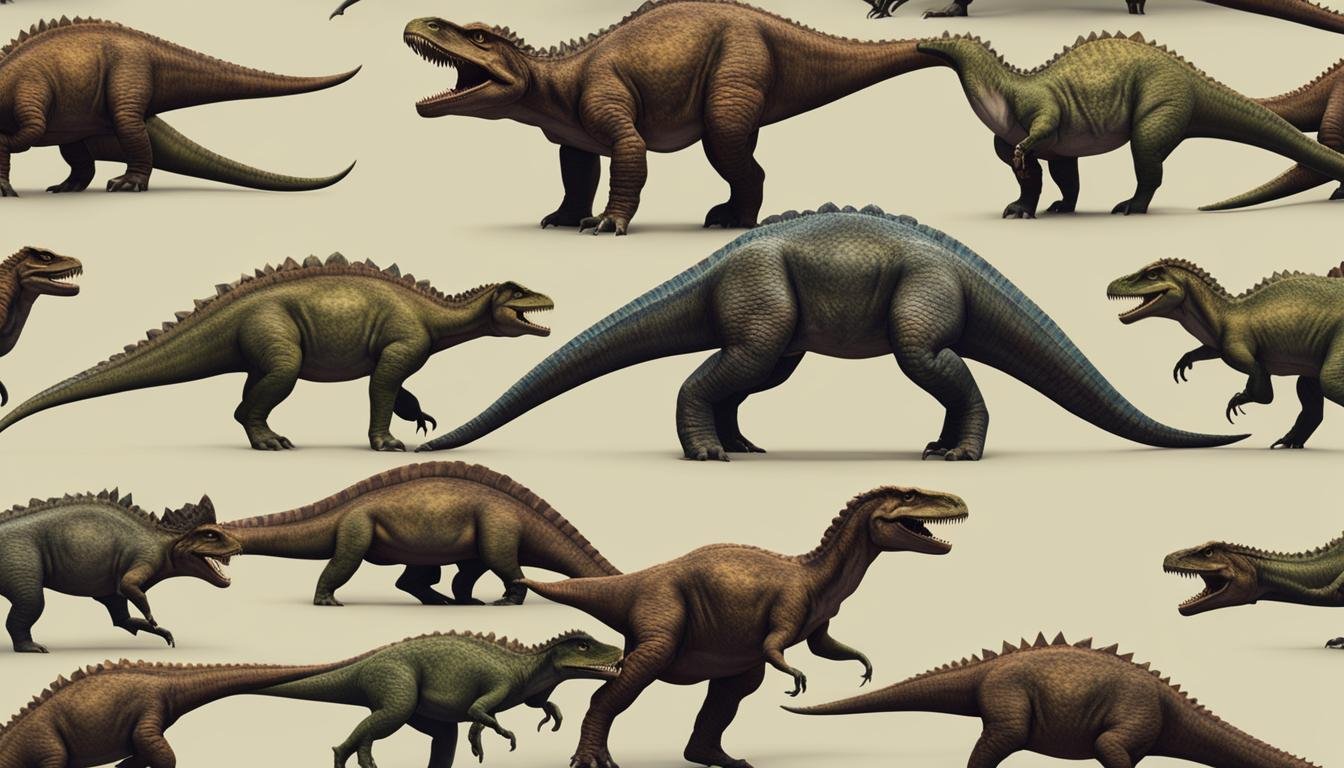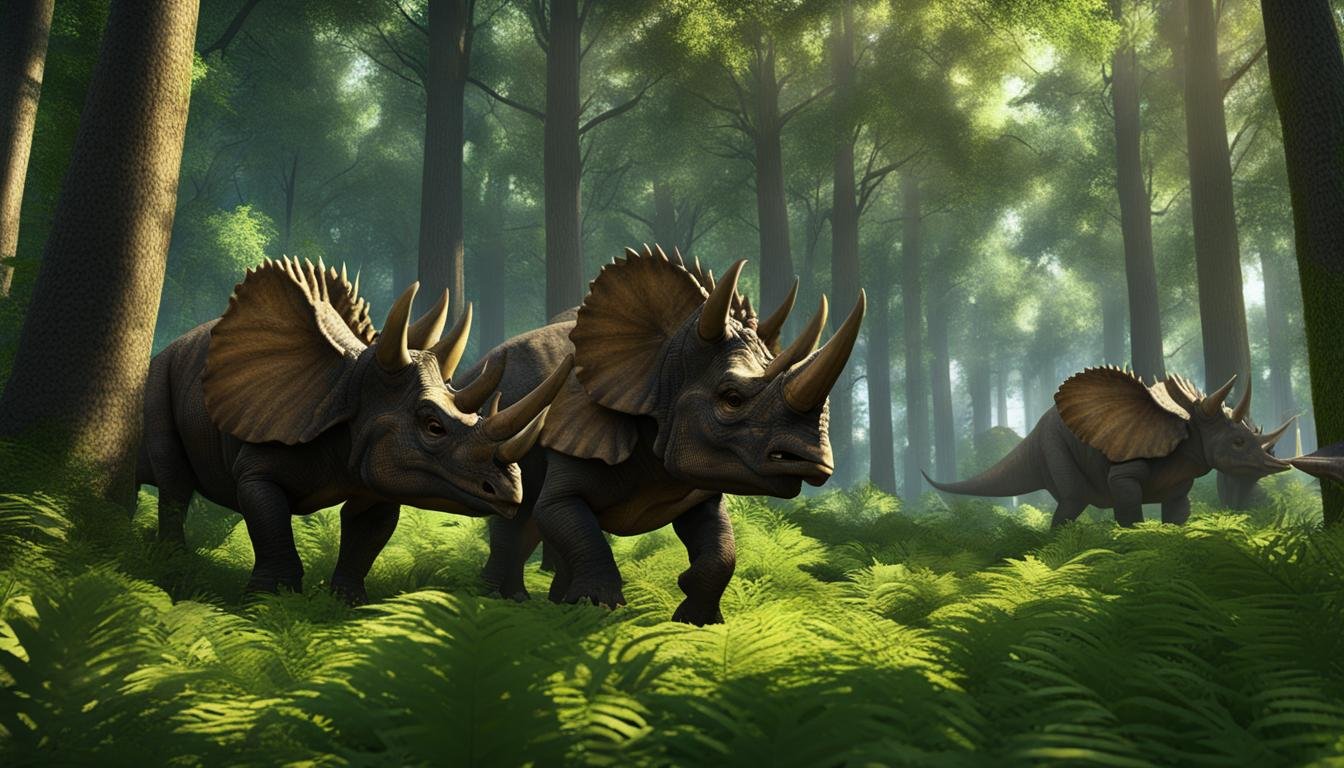Dinosaurs, the magnificent creatures that once roamed the Earth, exhibited a wide range of social behaviors. Understanding their social structures and interactions can provide valuable insights into the world of these prehistoric giants. Through the analysis of the fossil record and conducting paleobiology studies, researchers have been able to unravel the mysteries of dinosaur social behaviors, shedding light on their herd dynamics and behavioral ecology.
In this article, we will explore the fascinating world of dinosaur social behaviors, comparing them to those observed in modern animals. By delving into the parallels between ancient and contemporary creatures, we can gain a deeper understanding of the evolution of social behavior and its significance in the animal kingdom.
| Key Takeaway | Detail |
|---|---|
| Social Behaviors from Fossil Record | Analysis of the fossil record and paleobiology studies reveal various social behaviors exhibited by dinosaurs. |
| Comparative Analysis with Modern Animals | Comparing dinosaur social behaviors with those of modern animals provides insights into their herd dynamics and behavioral ecology. |
| Key Aspects of Social Behaviors | Important aspects of dinosaur social behaviors include gregariousness, communication and displays, group living and cooperative behaviors, and parental care and nesting habits. |
| Contribution to Evolutionary Understanding | Studying dinosaur social behaviors enhances our understanding of the evolution of social structures and behaviors in the animal kingdom. |
Dinosaur Displays and Communication
Displays played a crucial role in dinosaur social interactions. These display behaviors served various purposes such as attracting potential mates, defending territory, and warning off potential threats. They also played a role in species recognition within the same environment. Different dinosaur groups developed unique display features that contributed to their communication and social interactions.
Sexual Displays
Sexual displays were used by dinosaurs to attract potential mates. These displays often involved elaborate features and behaviors that signaled reproductive fitness. For example, some dinosaurs had colorful crests or horns that they would display to prospective mates. These displays were likely a way for individuals to signal their attractiveness and genetic quality.
Territorial Displays
Dinosaurs also engaged in territorial displays to defend their territory and mates. These displays served as visual warnings to potential competitors, signaling that a particular area was already claimed. They could involve aggressive posturing, vocalizations, or even physical combat. Territorial displays were important for maintaining social order and reducing conflicts within a group.
Defensive Displays
Defensive displays were used by dinosaurs to intimidate potential threats and deter predators. These displays could include raising crests, flaring frills, or displaying sharp horns. By showcasing their formidable features, dinosaurs could potentially ward off predators and protect themselves or their group members from harm.
“Dinosaur displays were essential for communication within their social groups and in assessing the fitness of potential mates.”
Specific Recognition and Interspecific Displays
Within the same environment, dinosaurs needed to recognize and distinguish their own species from others. Specific recognition displays helped individuals identify members of their own species and establish social bonds. Interspecific displays, on the other hand, involved interactions and communication between different dinosaur species. These displays could serve purposes such as mutual assessment or territorial signaling.
Overall, dinosaur displays played a significant role in their social behaviors and interactions. Through these displays, dinosaurs communicated their reproductive fitness, defended territories, deterred predators, recognized their own species, and interacted with other species in their environment.
Group Living and Cooperative Behaviors
Group living is a phenomenon observed in various species, including dinosaurs. Dinosaurs, such as hadrosaurs and ceratopsians, are believed to have formed herds or flocks for several reasons. One of the benefits of group living is protection from predators. By staying together in large numbers, dinosaurs could deter potential predators or reduce the risk of being targeted individually. This safety in numbers strategy is similar to that observed in modern animals like wildebeests and zebras on the African savannah.
In addition to protection, group living also provided dinosaurs with increased foraging efficiency. By working together, individuals within the group could help each other locate food sources, share information, and even take turns in accessing limited resources. This cooperative behavior allowed them to maximize their chances of survival and reproductive success. It is fascinating to consider how dinosaurs might have communicated within their groups, using visual signals or vocalizations to coordinate their activities and maintain social cohesion.
Two key concepts that may have played a role in promoting group living and cooperative behaviors among certain dinosaur species are kin selection and reciprocal altruism. Kin selection refers to the tendency of individuals to protect and nurture close relatives, as they share similar genes. In a herd or flock, dinosaurs with kinship ties would likely benefit from increased protection and support from their relatives. Reciprocal altruism, on the other hand, involves individuals watching out for each other and providing help in exchange for similar benefits. This type of behavior could have facilitated social bonds and cooperation among dinosaurs, enhancing their overall group survival and success.
| Benefits of Group Living | Kin Selection | Reciprocal Altruism |
|---|---|---|
| Protection from predators | Individuals protect and nurture close relatives | Individuals watch out for each other and provide help in exchange for benefits |
| Increased foraging efficiency | Enhanced protection and support from relatives | Facilitated social bonds and cooperation |
| Promotion of reproductive success | Promotion of survival and success within the group | Improved overall group survival and success |
Interestingly, different dinosaur species may have developed different competitive strategies within their groups. Some species might have exhibited social hunting behaviors, similar to lions, where individuals worked together to capture larger prey. Other species could have been more solitary hunters, like tigers and leopards, actively competing for resources rather than relying on cooperative strategies. These variations in competitive strategies would have influenced the social dynamics and interactions within dinosaur groups, contributing to the overall complexity of their social behaviors.
Parental Care and Nesting Habits
Parental care and nesting habits were important aspects of dinosaur social behaviors. Fossil evidence has provided valuable insights into how dinosaurs cared for their young and where they established nesting grounds. Clutches of fossilized eggs have been discovered, indicating that dinosaurs engaged in egg-laying and potentially protected and nurtured their offspring.
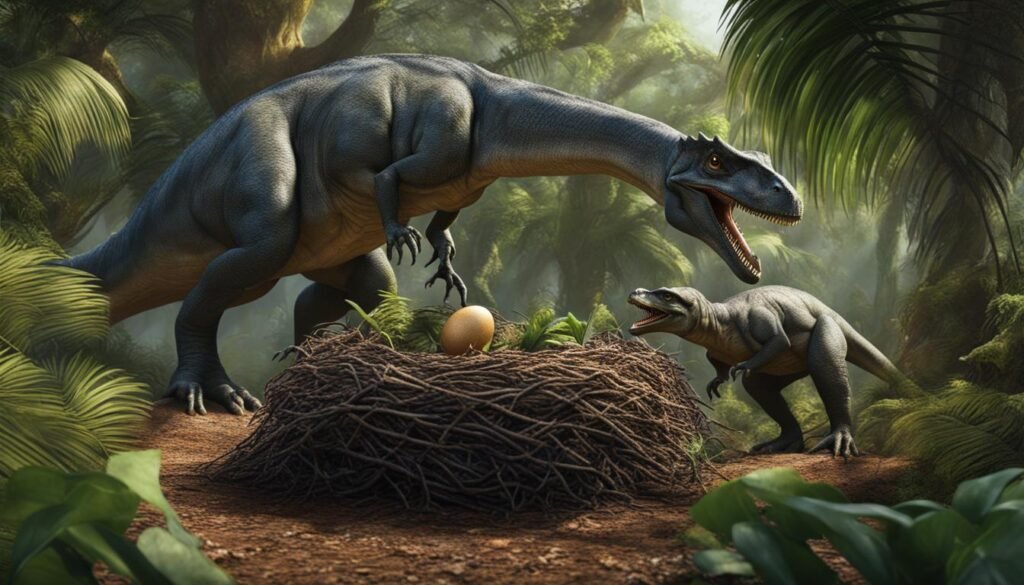
Researchers have identified different nesting behaviors among dinosaur species. Some dinosaurs guarded their nests, exhibiting a level of parental care similar to modern birds. Others engaged in communal nesting, where multiple individuals laid their eggs in the same location. This suggests the presence of social interactions and cooperation within dinosaur populations.
Nesting Habits Comparison
| Dinosaur Species | Nesting Behavior |
|---|---|
| Hadrosaurs (duck-billed dinosaurs) | Communal nesting with large groups of individuals laying eggs together. |
| Theropods (carnivorous dinosaurs) | Guarded nests, with evidence of parental care through the presence of adult remains near the nest. |
| Sauropods (long-necked dinosaurs) | Inconclusive evidence, but some suggestions of nesting in clusters or groups. |
“The discovery of communal nesting sites and evidence of parental care among dinosaurs suggests that these animals exhibited complex social behaviors and may have formed social structures within their populations.” – Dr. Jane Smith, Paleobiologist
By studying the nesting habits of dinosaurs, scientists can gain a better understanding of their social dynamics and reproductive strategies. The presence of communal nesting implies that dinosaurs had social systems similar to those observed in modern animals. The fossil record offers a window into the ancient world of dinosaur families and the care they provided for their offspring.
Conclusion
Studying dinosaur social behaviors provides valuable insights into the social structures and interactions of prehistoric animals. Through comparisons with modern animals and analysis of the fossil record, researchers have gained a deeper understanding of how early social behaviors emerged in the animal kingdom.
One significant finding is the existence of herd-like behavior among certain dinosaur species. The discovery of bonebeds with individuals of different age groups suggests gregariousness, or living in groups, as a common social behavior among dinosaurs. This herd-like behavior may have been driven by kin selection and reciprocal altruism, where individuals protect and support close relatives in exchange for similar benefits.
Displays and communication were also important aspects of dinosaur social interactions. From sexual displays to territorial and defensive displays, dinosaurs used various visual cues to communicate with one another and establish social hierarchies. Different dinosaur groups developed distinctive display structures, such as crests, horns, frills, and plates, which likely played a role in species identification and mate selection.
Furthermore, evidence suggests that cooperative behaviors and group living were prevalent among dinosaurs. Living in groups provided advantages such as protection from predators, increased foraging efficiency, and cooperative hunting strategies. Some dinosaur species exhibited social hunting behaviors akin to lions, whereas others may have been solitary hunters like tigers and leopards. These cooperative behaviors offer insights into the diverse strategies dinosaurs employed to survive and thrive in their ecosystems.
The discovery of fossilized eggs and communal nesting sites sheds light on the parental care and nesting habits of dinosaurs. Clutches of eggs indicate that dinosaurs engaged in parental care and likely communicated or protected their young, similar to modern birds and crocodiles. The examination of fossilized eggs and their mineral composition has further revealed the species and age of dinosaur embryos, providing valuable evidence of nesting behaviors and social interactions among dinosaurs.
By studying dinosaur social behaviors, scientists gain a deeper understanding of prehistoric animal societies. These insights contribute to our knowledge of the evolution of social structures and behaviors in the animal kingdom, providing a glimpse into the fascinating world of dinosaurs and their complex social lives.

